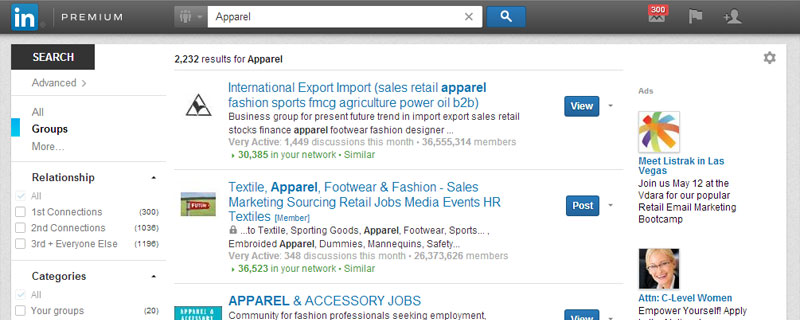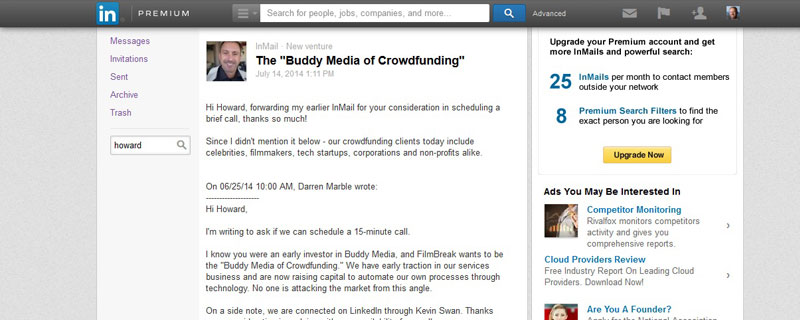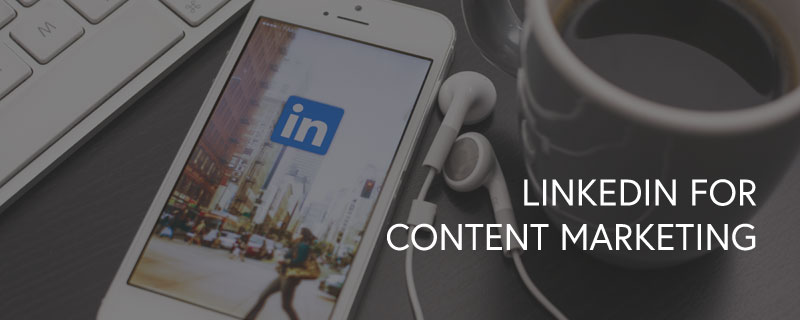BLOG
Why Use LinkedIn for Content Marketing?
Imagine this: you just wrote a stunning article for your financial firm’s blog. You shared it on Facebook and Twitter, and you got a few shares and like, but other than that, there is not a lot of traction. The followers who are engaging with your content are consumers, whereas the people who would really benefit are businesses and certain business professionals.
For such content, there is only one place to go: LinkedIn. According to the site, more than one-third of the world’s 600 million professionals have profiles on LinkedIn. The site boasts that is it “the largest community of influential, affluent and educated people” and its primary focus is on business-to-business (B2B) interactions. While Facebook and Twitter are both well-connected in their own rights, LinkedIn reaches a more professional audience and is an essential part of any content marketing strategy.
So why should you integrate LinkedIn into your content marketing strategy? Read on to learn about the benefits and lead generation opportunities that only LinkedIn can supply.
Personal and professional crossover
As a digital marketer, you should already have your own personal LinkedIn profile. The company you work for should also have its own company page, complete with all the necessary information about the business. As the administrator, you can use the two together to bring in new connections and opportunities for lead generation.
You should be sharing content between your personal and professional accounts to increase engagement on the company site and reach your own connections. Your personal connections could become connections through your company, and in turn, their connections might become leads.
Do not forget to include posts from other company employees and encourage them to follow and keep up with the company LinkedIn profile. Employees that are willing to interact with their company on social media promote a healthy work environment to your followers. It shows that even online, your employees are still interested in the industry and it is more than just a job for them.
LinkedIn Groups and sharing potential

The main purpose of LinkedIn Groups is to create a discussion regarding a certain business type, industry or professional field. Buyers and sellers come together in one group (or hundreds as there are a ton of groups on LinkedIn) to talk openly about relevant subjects.
If you are part of a LinkedIn group, you could be getting your content right into the hands of those who will appreciate it the most. Best of all, you do not have to pay to join these groups; they are free.
As these groups are filled with potential customers, it is vital that you appear trustworthy, professional and knowledgeable. Posting high-quality content will help boost your image, and group members will want to come to you with their questions and concerns. Group members can also provide you with meaningful feedback on your articles and provide tips for how to improve them. They might also ask questions, which could be the foundation for another blog post.
The important thing to remember is to not spam these groups. Yes, you should share your content, but you also need to participate. If you only share content, no one will believe you are in the group to actually talk and learn. Balance your content sharing by asking questions or commenting on the content that other people post. Other group members will appreciate your authenticity.
If you have participated and shared good content, group members may come to you for business or they may recommend you to their connections. Either way, your company is gaining new, strong leads.
Sharing content through Sponsored Updates
You probably know of other social media sites that offer pay-per-click or pay-per-1,000 impression features, but if you brush them off or feel that LinkedIn might not be as reachable, you will be sorry later on.
In many ways, LinkedIn’s Sponsored Update feature is like most other PPC services on other social media sites. You can pay to target individuals by their location, age, gender and other demographics and then push your post onto your targeted individual’s feed.
However, Sponsored Update provides one key feature that sets it apart from other PPC services: customisation based on company name, job title, skills, schools, job functions and groups. When you want to reach out to businesses, you can target them specifically. If your financial firm wants to target bookkeepers and accountants, you need only target them.
The result is a much more focused campaign that will share your content with people who may be the most interested.
Send content directly to recipients through Sponsored InMail

A sponsored inmail example. Source: LinkedIn
One of the fastest ways to get content into your readers’ hands is to send it straight to their inboxes. With LinkedIn’s Sponsored InMail, you can accomplish this feat easily.
Sponsored InMail works a lot like regular InMail except that it shows up as an ad. It can also be used to target InMails not currently in your contact list. Recipients will see messages pop up in their inboxes and be able to click through them. LinkedIn says that no inbox will receive more than one InMail every 60 days so you can be sure that your messages are not getting lost amidst a sea of other sponsored messages.
The messages can be highly personalised for individuals, and marketers can use a number of tools to customise their content. They can highlight strong call-to-actions and provide widgets that will easily take readers to the company LinkedIn page. Other share buttons allow users to share the content easily through LinkedIn.
LinkedIn actually boasts a high credibility rate among its users, and they tend to trust LinkedIn recommendations more than other social media platforms. According to LinkedIn, 68 percent of its users trust recommendations from LinkedIn or people on LinkedIn, as opposed to Twitter (33 percent) and Facebook (18 percent).
Digital marketers tend to forget about LinkedIn altogether when they are creating their content marketing strategies, but they may be missing out on a valuable opportunity. With a large audience and a high credibility, LinkedIn can help you put your content in the hands of the right audience and generate more leads through the sharing of information and meaningful discussion.











